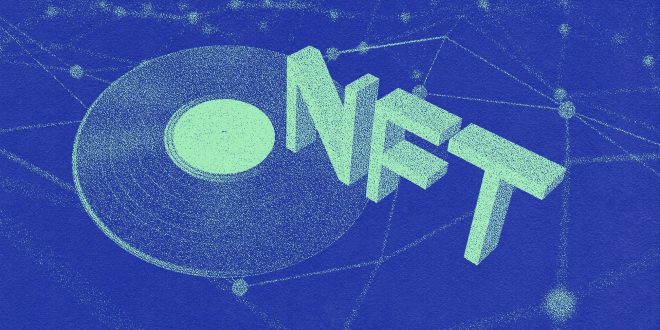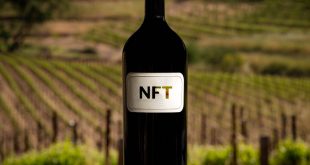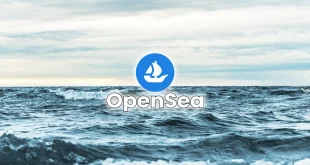Are you searching for the first NFT music and artwork in space? Then you come to the correct webpage, which will provide detailed info. First, exceptional NFT Music and Artwork are piped into space by Artemis Music Entertainment on July 28, 2021. The first broadcast from the Artemis Space Network’s Artemis Space Network Radio Station transmitted Debussy’s classic Clef de Lune ‘Moonlight’ from the International Space Station (ISS).
As the spacecraft flew over 120 countries, it traveled approximately 125,000 miles in space, including around the Earth’s entire orbit, displaying images of beauty, hope, unity, peace, also love. A one-of-a-kind NFT that has been flown into space for minting is set to be made available on Notables. Forest Road Company (Forest Road) presents a highly curated NFT marketplace. Through the Artemis Music Foundation, proceeds benefit teenagers, artists, and musicians.
Based on Micah Johnson’s aspirational character Aku, the network test artwork was specially made by him. Artwork from this young Black boy, the first of its kind to reach space, reflects his desire to become an astronaut. It is worth noting that “Why Not Me” was sold for $60K just one day ago, with all proceeds going to SEDS — Students for the Exploration and Development of Space. A nonprofit international organization is promoting STEM projects as a means of space exploration.
Nanoracks, an industry leader in commercial space services, has partnered with Artemis Space Network to build a permanent commercial infrastructure unit onboard the International Space Station. The Houston control center transmitted Clair de Lune also other digital payloads to Bishop. The NanoRacks airlock was named for Bishop in England. Bishop received both satellites as they orbited Earth following their transmission from Houston.
A piece of new music NFT completes its orbit around Earth.
The music NFT of Debussy’s “Clair de Lune” has successfully orbited the earth for the first time. It is the first time a non-fungible token has been included in streaming music to the International Space Station, reports Space.com. A recording of Nanoracks LLC also Artemis Music Entertainment was sent to the space station. After orbiting the earth, the file returned to base also was produced as an NFT.
NFTs: The Final Frontier
This new shift in direction may stimulate higher interest in the entertainment sector as sales of music-related NFTs are on the decline. The Artemis Space Network was tested when it transmitted and minted the NFT. This platform’s media and technology are centered on entertainment, and telemetry is an integral part of that endeavor. As co-founder of Artemis Music Bob Richards suggests, blockchain contracts with telemetry would prove where and when files are stored.
NASA aimed to test communication protocols and extract meaningful, valid, and accurate data from digital media during its first music NFT experiment in space. In addition, Richards remarked that the music selected for the first NFT ” is as close to stirring the feelings of wonder and they experienced by space travelers as it can be.”
NFT in Space: Give Me the Moonlight
In French, Clair de Lune is known as “Moonlight” also performed by Wing-Chong Kam. Despite its classical roots, this piece has been featured in TV shows, ads, and movies for non-classical fans. The Bellagio fountains scene from Ocean’s Eleven appears on the soundtrack.
Moonlight from CLAIR DE LUNE (Light of the Moon)
Wing-Chong Kam, an internationally renowned pianist, has performed Debussy’s Clair de Lune (‘Moonlight’) for Artemis Music LLC in an exceptional performance. It was a tribute to Claude Debussy’s timeless beauty also a celebration of the unity of music for all humankind that he was launched into space on July 28th, 2021, aboard the International Space Station. People experience a cognitive shift when they see space from a cosmic perspective. Debussy’s Clair de Lune comes close to capturing the awe and wonder astronauts experience during landings on the International Space Station. Humans are learning how to study science through music to grasp their place in the universe also the Artemis Music Entertainment site within it.
Aku (the moon god)
Original NFT artwork “Why Not Me” was transmitted into space for the first time, containing Aku’s inspirational character. Known artist Micah Johnson composed the music on July 28th and sent it to the International Space Station (ISS) but returned that music to Earth via a radio communication test for the Artemis Music LLC of Cape Canaveral, Florida. A constellation of satellites relayed the NFT to commercial servers aboard the International Space Station by transmitting digital files from Houston, Texas.
These NFT’s have been authenticated also sent to the mission control center after returning from Earth orbit and relayed as authenticated NFTs. A complete Earth orbit and 125,000 miles was the distance covered by the NFT data files. An exceptional student for the Exploration and Development of Space (SEDS)’ was the recipient of net proceeds from the sale of “Why Not Me” on Notables on August 11th for $62,000. Space Youth Association is a non-profit organization that promotes and facilitates youth participation in space-inspired STEM education.
The black astronaut ‘Aku’ has become the first NFT artwork to reach space.
Young Black astronaut Aku was beaming from the International Space Station. Where do we go from here? His NFT collectors shaped a feature film.
A brief overview
A Black astronaut is depicted orbiting Earth on the International Space Station in this artwork. Funds will be raised for charity through an auction. A forthcoming feature film will be based on Johnson’s NFTs. Johnson’s NFT owners will be able to help develop the property. During a conversation with his mother about his four-year-old nephew, Micah Johnson created the character Aku to respond to his question: “Can astronauts be black?”
From the moment NFT began featuring the character in its artwork in February, NFT fans have been captivated. “It is an engaging way of allowing children to see what’s possible,” Johnson told Decrypt in an interview. Recent developments have seen Aku’s artwork travel to a server on the International Space Station (ISS), orbit the Earth, also return to earth. Next Tuesday, August 10, the Notables marketplace will launch a single-edition piece, the first NFT artwork to travel to space.
Nano rocks installed the first privately-owned commercial infrastructure on the International Space Station, the Bishop Airlock, collaborating with Artemis Music. According to Artemis Music, Nanoracks mission control in Houston, Texas, sent the video source for the new Aku NFT to the ISS on July 28. In just under two hours, the server returned to Earth after orbiting the planet for a second time. In the NFT’s Ethereum smart contract, telemetry and transmission data were retained to authenticate the process.
As part of Artemis Music Entertainment’s collaborative project. Aku was the first NFT art piece to fly to the International Space Station on July 28th, 2021. In collaboration with Nanoracks, we conducted an Artemis Space Network test that provided commercial space access to support opportunities for music also entertainment to go to outer space.
You can use an NFT as a deed of ownership for nearly any digital item, such as video files, artwork, video game items, or music recordings. “Clair de Lune” by composer Claude Debussy was the first NFT to orbit also back. In a Space.com interview, Richards explained that this test was designed to “demonstrate communications protocols and the methods of validating, validating, and authenticating a project.” Therefore, these could be some of the first digital creations launched into space before being minted as NFTs.Student Exploration and Development of Space (SEDS) will receive all net proceeds from the Aku NFT sale. 50% of the money will go to historically black colleges and universities (HBCUs) and minority outreach programs.
Everything is possible if you believe it.
Between an open NFT artwork drop and NFTs paired with physical sculptures, Johnson’s first drop of Aku NFTs in February generated $2 million in sales on Nifty Gateway. The following two Aku NFT drops have now traveled to space ahead of their auction, adding another $1.27 million in total sales to the pile. The process behind it is pretty incredible. Then we sent a black space character to the space station just after [Jeff] Bezos and [Richard] Branson went to outer space.
Decrypt told Johnson that he thought it was a powerful idea. Aku is an integral part of what I’m trying to convey through him: that anything is possible.”Aku has more in store for him as well. In April, an anonymous content company, Permanent Content, founded by Shawn Mendes and manager Andrew Gertler, optioned the character for film and television projects. The upcoming film Aku, made by NFT, is billed as the first NFT creation optioned by other entertainment companies.
By using the emerging NFT-centric community around his crypto-native artwork. Johnson is giving fans also collectors a chance to contribute to Aku’s intellectual property development ahead of the movie’s release. Christie’s auction recently sold him a piece of NFT artwork titled “Hi, my name is,” that allows the buyer to determine what Aku’s friend’s name will be; the friend’s name will become part of the film world. The developer told Decrypt he’s looking into other ways to bring the community even more about intellectual property law, including using decentralized autonomous organizations (DAOs) to govern decisions.
You could bring together a Leadership Council composed of select NFT owners to discuss content proposals and enhance consistency even with participation from an extensive fan base. How powerful is it to give fans a direct stake in the growth and expansion of a franchise? In the days following Aku’s release, I did not think of anything [like this]. I just wanted to see this character in the world,” Johnson said. We want to build a platform that can potentially directly share our films with one or more audiences with the Aku brand. How can we do that? What’s remarkable is that.”
Artemis Space Network
With the advancement of science and technology, human society moves into space also brings everything that makes us human. NASA created Artemis Moon-Mars, a program that developed astronomically themed music and entertainment. A socially conscious approach to technology provides support and enables a new era of music and entertainment access to outer space, advancing the connectivity of space, music, and entertainment media. It is the first commercially accessible, space-based music and entertainment platform globally.
In addition, these partnerships will enable musicians, producers, creators, and curators to connect their artistic and musical works to outer space’s inspiration, perspective, and opportunities. By preserving the uniqueness and provenance of all underlying rights and IP, blockchain technology can enhance and reinforce the performance of blockchain technology. Creators, fans, and collectors worldwide can create and transmit space-flight-based creative works through the Artemis Space Network.
Non-fungible tokens
What is NFT? Non-fungible tokens are NFTs. A non-fungible item cannot be exchanged.
NFTs are unique assets and cannot be easily exchanged, such as artwork, tickets, music, trading cards, also the like. Unlike fungible cryptocurrencies like Ethereum, Bitcoin, and Dogecoin, fungible cryptocurrencies do not have unique properties. Figure cryptocurrencies can be exchanged for similarly valued items, just like paper money.
NFTs allow buyers to see the previous owners of the item and be assured that the thing is as described as sold. It is also advantageous for artists to earn money directly from their fans rather than streaming services.
Each time the NFT is sold, the original owner earns an 8% royalty. Platforms like Foundation also Zora do permit their artists to receive royalties. In this way, creators can earn royalties on every sale of their work to every person in the world.
NFTs are typically made as ERC-721 tokens, which means a seller can only receive a payment if they first sell their work to a buyer. Using the platform, artists who mint NFTs set their “creator share” – a percentage they receive for any future sales they make.
 Next Tech Magazine Get The Latest Technology Updates
Next Tech Magazine Get The Latest Technology Updates







